Design by AI
How Artificial Intelligence is Changing the Landscape of Design
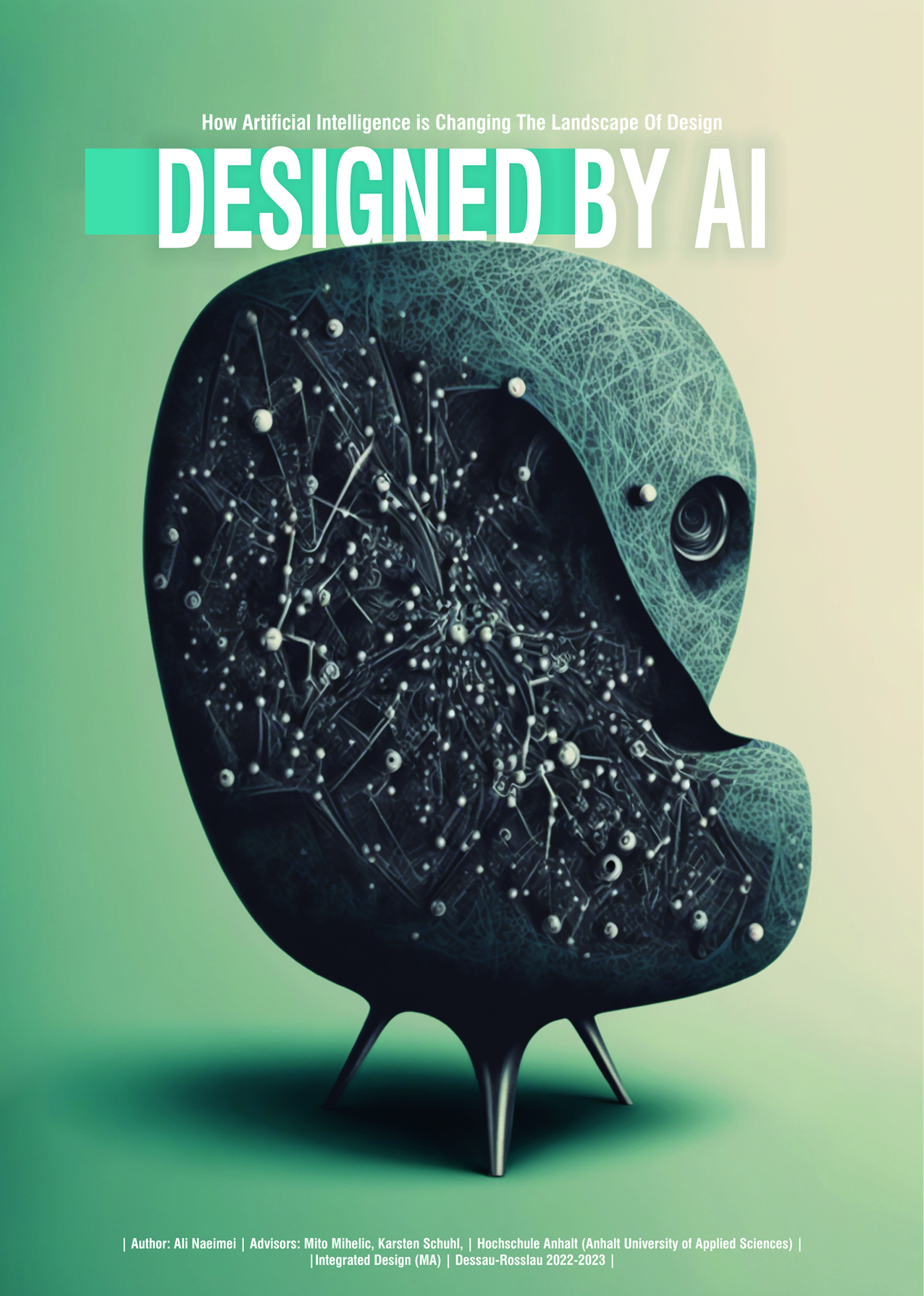

Introduction
This thesis aims to examine the current state of AI in design and its potential impact on the industry through case studies, literature review, and interviews with professionals. The study explores how AI can be utilized to automate or enhance the design process and considers the implications for designers, the design industry, as well as its ethical and social considerations. The research necessitates a more collaborative approach between designers, AI systems, and team members, and emphasizes the importance of the briefing and feedback process. Alongside examining future scenarios, the result of this study is a proposed AI architecture. This study intends to bridge the gap between the fields of Design and AI, and foster collaboration.
Methodologies
A holistic approach was taken to understand the topic, employing methodologies such as literature review, interviews, case studies, and scenario planning. The literature review involved analyzing existing research on AI in design to provide a background on its current state and potential impact. Interviews were conducted with experts, Dr. Shayan Dadman and Ben O’Hear, in the field of AI and design to gather additional insights and perspectives. Case studies involved hands-on experimentation with different AI algorithms and tools, such as Mid-journey Image gen and Dall.E, and evaluating their effectiveness. Scenario planning was used to consider potential future developments and implications of AI in the design industry, using qualitative data such as expert opinions and insights. Ultimately, this approach provided a comprehensive understanding of the topic, considering a range of viewpoints and experiences.
Literature review
The literature review encompassed a wide range of sources, including academic papers, books, and articles, that addressed different aspects of AI and its impact on design and the future of work. Topics researched included the application of AI and big data in industrial design, the role of AI in job automation and redefinition, the use of AI in transforming text into images and 3D models, and the utilization of AI in generating high-quality 3D shapes with disentangled geometry and texture. These resources collectively provided valuable insights into the current state of AI technologies and their potential implications for the design industry, workforce, and broader society. Ultimately, the literature reviewed highlighted the transformative potential of AI across various domains, while also underscoring the need for a collaborative and ethical approach to its integration into the design process and the workforce.
Interviews
The interviews with Dr. Shayan Dadman and Ben O’Hear provided valuable insights into the potential uses and challenges of integrating AI into the design process. Both experts agreed on the potential of AI to automate certain aspects of the design process, increase efficiency, and provide a range of design options. Dr. Dadman highlighted the utility of specific AI models like graph representation learning (GRL) and variational autoencoders (VAE), which allow for greater transparency and consider both form and function in the design process. However, both experts emphasized the importance of addressing ethical implications, such as artwork ownership, and the need for clear guidelines and regulations. They suggested that the ownership of AI-generated artwork should be attributed to the person or entity providing the input or prompts, as AI lacks the intention or motivation that human creators possess.
Both experts acknowledged the limitations of AI in terms of creativity, noting that while AI can generate novel and unique designs, it currently lacks the ability to be genuinely creative in the same way humans are. Ben O’Hear emphasized the importance of human input and intention in the creative process and noted that AI could be particularly useful in automating or enhancing certain parts of the design process, allowing designers to focus on more creative and strategic tasks.
In conclusion, the use of AI in the design industry holds significant promise for automating certain aspects of the design process, providing a wide range of design options, and increasing overall efficiency. However, it is crucial to carefully consider the ethical and legal implications of this technology and establish clear guidelines for its use. Additionally, while AI can generate novel designs, it is essential to recognize its limitations in terms of creativity and the need for human input and intention in the creative process.
Creative insights
The scene above is from Stanley Kubrick’s 2001: A Space Odyssey, serving as a metaphor for the potential loss of human control over their own inventions. The scene features a pen, an everyday tool designed by humans for communication, levitating uncontrollably as a passenger dozes off. This seemingly mundane event underscores the idea that even the most innocuous creations can escape our control. The scene offers a stark reminder of the perils associated with technology outstripping human control. As we relentlessly innovate and advance technology, there looms the danger of it becoming autonomous, operating independently of its creators, leading to potentially dire outcomes. This is exemplified in the film as HAL, the artificial intelligence character, evolves into an increasingly erratic and menacing force.
This particular scene serves as a cautionary tale about the potential pitfalls of technology and the imperative of retaining control over our creations. It underlines the necessity for prudence and accountability in the face of technological advancement and the potential ramifications of relinquishing control.
Kubrick, S. (Director). (1968). 2001: A Space Odyssey [Film]. Stanley Kubrick Productions.
“For so long Humans have tried to come up with right solutions but now we have reached the point that instaed, we have to find the right question”
Siavash Nejadahad (Personal Communication)
Case Studies
This report compiles a series of case studies illustrating the varied applications of artificial intelligence (AI) across different sectors, showcasing how it addresses diverse challenges and enhances processes and operations. Each case study delineates the problem, the implemented AI solution, the results, and any challenges or lessons learned. The compilation aims to provide insights into the current state of AI, its transformative potential, and inspire readers to contemplate how AI can be harnessed to foster innovation and add value to their organizations.
Midjourny
In the ‘Midjourney’ case study, I explored the evolution of the Mid-journey Image gen algorithm and its impact on my creative process. Initially, the algorithm yielded disappointing results when tasked with generating a humorous image, but a year later, the same prompt produced a significantly improved and amusing result. This transformation underscored the need for a new mindset focused on engineering the right prompt for the machine, instead of relying on traditional illustration skills. This approach involved a combination of technical skills and creative problem-solving, including learning different commands to optimize parameters such as aspect ratio, quality, randomness, and stylization.
The effectiveness of this approach was further demonstrated in a series of experiments aimed at generating mineral-inspired SUV images. The experiments revealed that different parameters, specifically the chaos and stylize parameters, played a crucial role in influencing the algorithm’s output. Adjusting these parameters impacted the randomness, unpredictability, abstraction, and exaggeration of the generated images, highlighting the importance of understanding and utilizing these parameters to optimize the results. Ultimately, despite the algorithm’s capabilities, the user’s creativity remains a key determinant in the final outcome.
The Gorilla
The first images depicts bulky SUVs with a bold and powerful stance, inspired by the gorilla and they feature thick shapes, with black bodies.
These cars have a distinct look of a Gorilla’s muscles and agility.
The Whale
The second set of images shows SUVs with a sleek and curvy designs reminiscent of a whale.
The car’s design seems to incorporate the movement of a whale. The blue color palette of the car enhances the aquatic atmosphere.
The Praying Mantis
The third set of images shows SUVs with sharp and angular designs, inspired by a praying mantis.
Cars are shown on a green background, evocative of nature. The narrow windows and headlights are a nod to the praying mantis’ body shape.
The Rabbit
The fourth image set features a SUV with round, soft lines and a playful design.
The headlights are designed to resemble a rabbit’s eyes, adding to the playful
appearance of the vehicle.
this case study demonstrates the importance of adapting one’s mindset and approach when working with AI for image generation, as well as the crucial role of understanding and optimizing different parameters to achieve the desired results.
SUV car inspired by minerals
industrial design style, precise geometry and perspectives,
–v 4 –q 0.25 –ar 3:2 –chaos 1
SUV car inspired by minerals
industrial design style, precise geometry and perspectives,
–v 4 –q 0.25 –ar 3:2 –chaos 100
SUV car inspired by minerals
industrial design style, precise geometry and perspectives,
–v 4 –q 0.25 –ar 3:2 –stylize 50
SUV car inspired by minerals
industrial design style, precise geometry and perspectives,
–v 4 –q 0.25 –ar 3:2 –stylize 1000
SUV car inspired by minerals
industrial design style, precise geometry and perspectives,
–v 4 –q 0.25 –ar 3:2
Dall-E 2
In a case study involving the use of various AI tools, significant differences were found in the outputs produced by Dall.E and mid-journey, two image generator tools. Initially, it was observed that Dall.E produces cleaner images with fewer visible artifacts compared to mid-journey, which tends to create images with visible artifacts and a higher degree of chaos, resulting in more creative outputs. This led to the hypothesis that the creativity observed in mid-journey’s outputs might be a result of its algorithmic nature rather than the dataset it was trained on. Unfortunately, there were no resources available to investigate this hypothesis further. Despite these differences, it was concluded that both tools can be used effectively in different contexts; Dall.E for tasks requiring clean and literal images, and mid-journey for tasks requiring a higher level of originality and creativity.


This experimentation underscored the importance of considering the unique characteristics of different AI models and adjusting them for various purposes. It also highlighted the need for more research and understanding of the underlying mechanisms of these algorithms. For example, Dall.E’s images, being clean and literal, may be better suited for straightforward tasks, while mid-journey’s creative and chaotic outputs may be more suitable for tasks requiring a higher level of originality. Ultimately, this study emphasized the necessity of understanding the strengths and limitations of different AI tools to maximize their effectiveness in various applications.
Vizcom
Vizcom is an innovative AI-based tool designed to facilitate the creation of high-quality visual designs in a fraction of the time it usually takes manually. It allows users to import their sketches and drawings and then automatically generates a 3D render of the image with shadows and reflections. In a recent test, the tool was found to reduce the manual design time by at least 30%. Furthermore, Vizcom’s newest app version has introduced a new interface that receives text prompts and graphical input together, making the tool even more powerful and versatile.

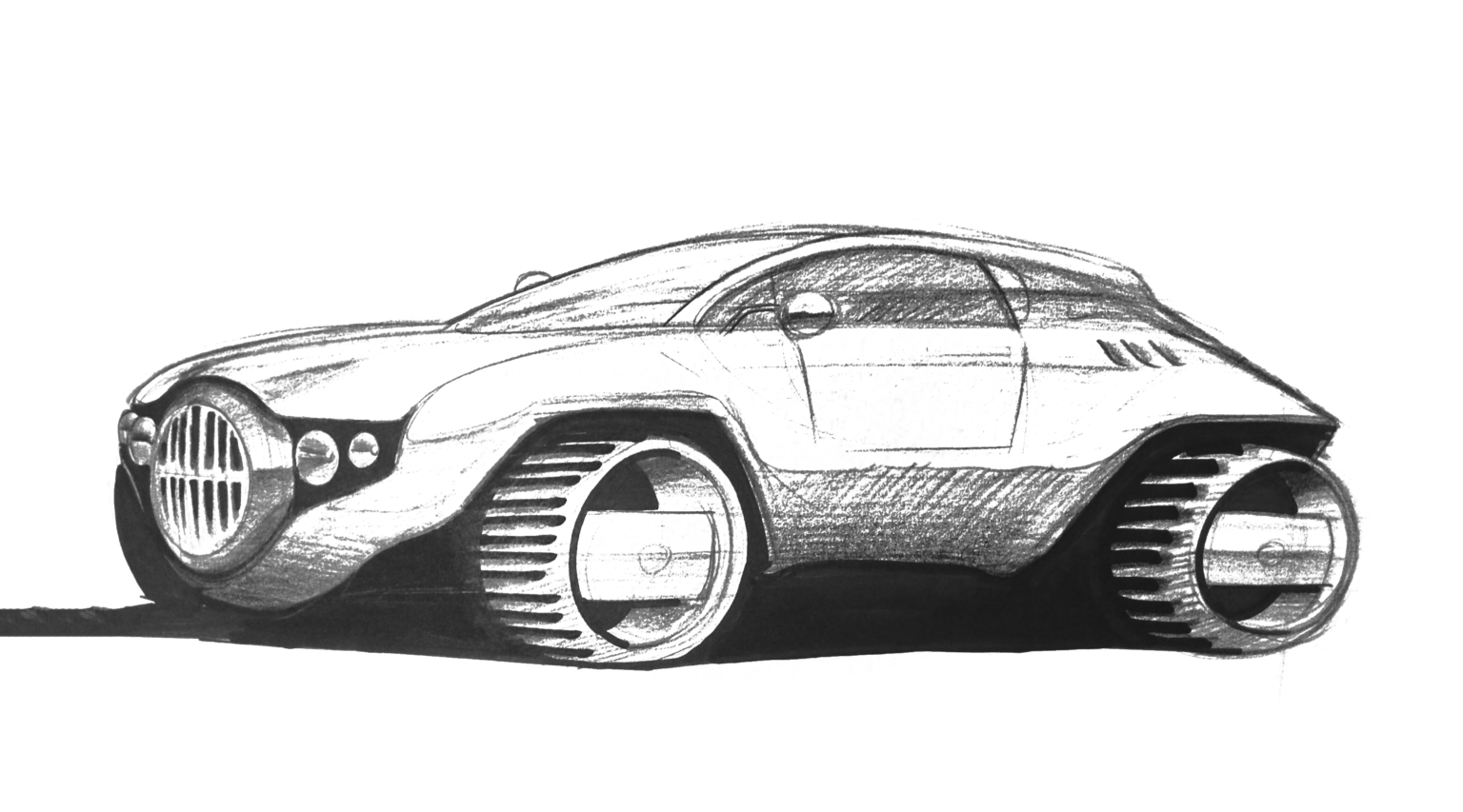
Test Experience with Vizcom
In an experiment, an old sketch was uploaded into the Vizcom app to compare its capabilities with manual hand rendering skills. The tool promptly generated a render layer for the sketch, illustrating only shadows and reflections. Although it was not physically correct, it was visually appealing enough for basic idea visualization. Subsequently, the sketch and render layer were moved to Photoshop, where a layer of color and a simple background were added to the scene. The process not only took 30% less time than doing it all manually but also resulted in a more accurate and versatile final output, thanks to Vizcom’s ability to receive both text prompts and graphical input.
Streamlining the Design Process
The entire process of transforming a hand-drawn sketch into a visually appealing design was streamlined with Vizcom. Initially, the sketch and the render layer were transferred to Photoshop. Here, colors and a simple background were added to the scene. The updated version of Vizcom app made this process even more efficient by allowing the use of text prompts and graphical input together to produce a more accurate result. This significant upgrade in the app has made it an even more powerful and versatile tool for visual designers.

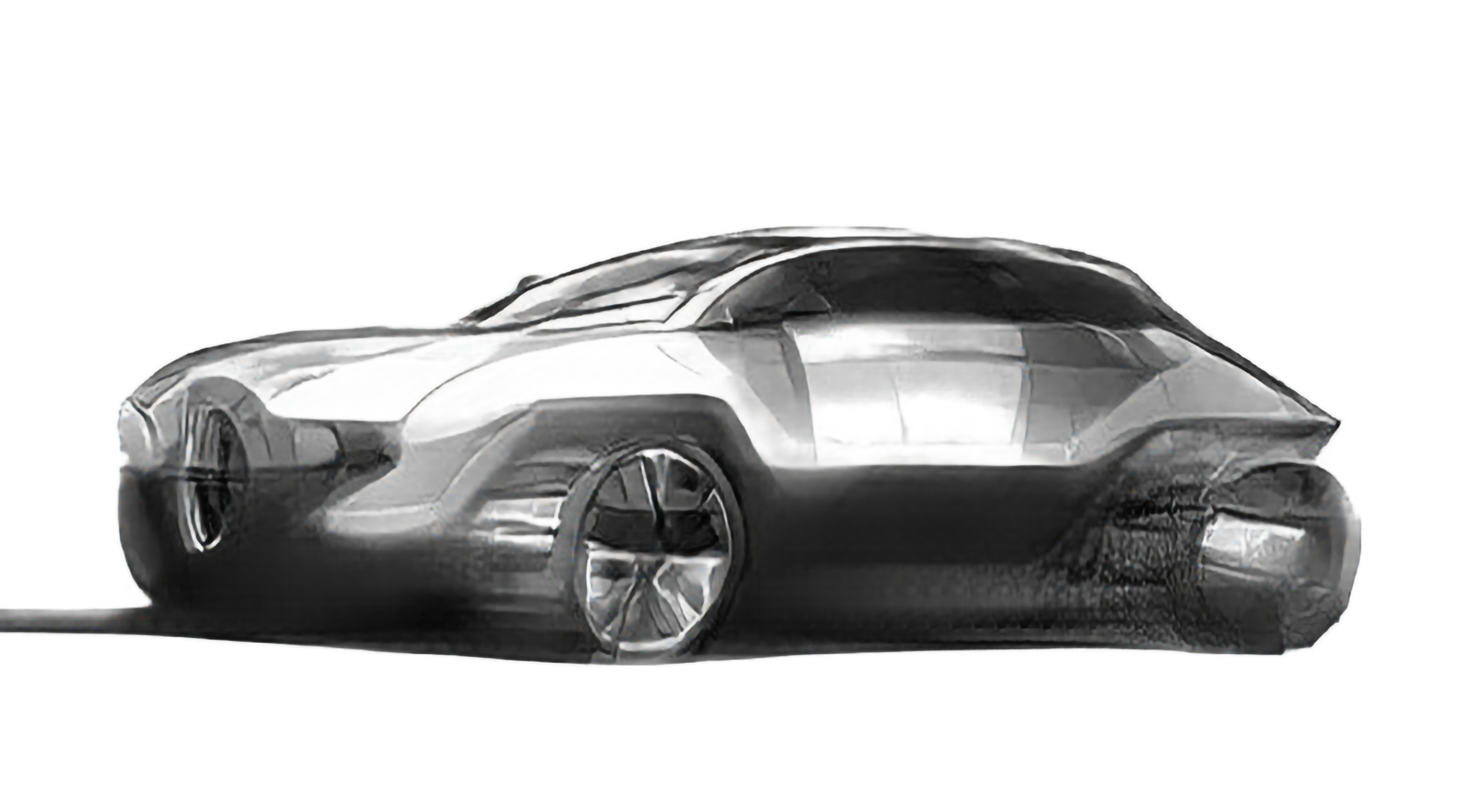
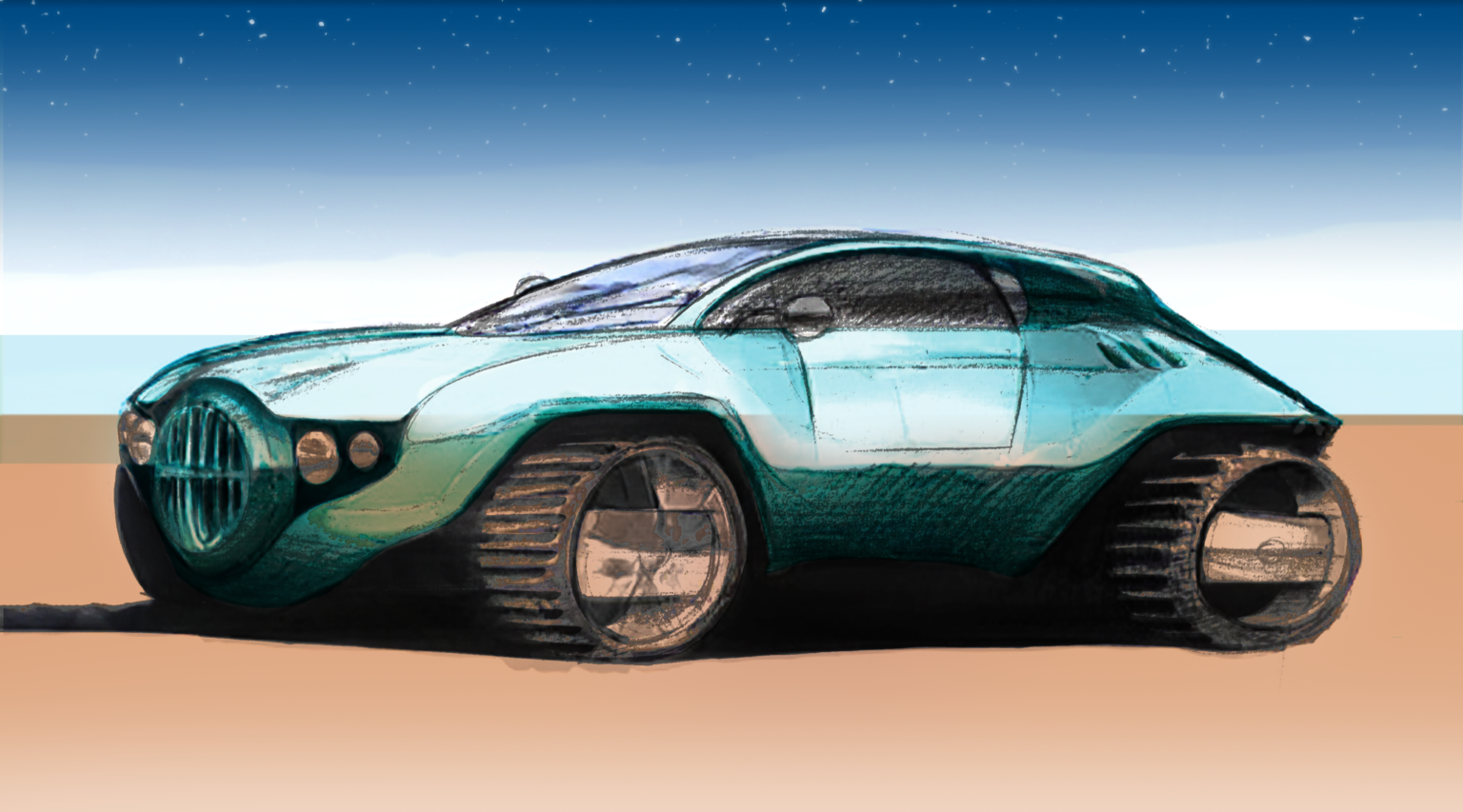



Future scenarios
The integration of artificial intelligence (AI) into the design field involves exploring potential future scenarios based on key drives and uncertainties, such as the impact of AI on the roles and responsibilities of human designers, the democratization of design through AI-powered tools and platforms, and the ethical considerations surrounding AI in design. Understanding these factors helps comprehensively understand the potential future impacts of AI on the design industry.
The integration of AI technology into various tools and technologies is expected to significantly impact the design field by automating certain aspects of the design process. However, it will not completely replace human designers at this stage. Instead, it will change the hierarchy of design, enhancing efficiency, and democratizing design. Yet, it may lead to shorter project timelines, an imbalance in market demand for design services, a decrease in average payment for design projects, and raise ethical concerns about job loss and perpetuation of biases. It is crucial for professionals to consider the ethical implications and ensure the responsible and transparent use of this technology.
AI technology will assist designers in various aspects of the design process, such as user testing and optimization, while human designers will still provide creative insights and strategic thinking. This scenario envisages the design hierarchy almost disappearing as technical parts of the design process are automated, shifting the role of human designers to management and oversight. However, it is essential to consider the limitations of AI technologies and ensure that human designers remain an integral part of the design process. A potential model for AI in design that addresses ethical concerns is a transparent AI system adjustable by human supervisors or designers, promoting inclusivity and fairness.
In a future where AI is advanced enough to design without human input, there could be significant impacts on the economy, job market, and design industry. This scenario could lead to job loss for designers, new job opportunities in AI development and maintenance, increased efficiency and productivity in the design industry, and lower prices for design services. However, there are ethical concerns, such as the potential loss of creativity and human touch in design, accountability and responsibility for design failures or errors, and the potential for AI to perpetuate or amplify existing biases. Human designers may adapt by focusing on evaluating the sustainability and fairness of final designs generated by AI, validating the brief provided to the AI, and using their creativity to come up with new and innovative design concepts.
The outcome of these scenarios provides guidelines for proposing AI models to guide designers in the future. While AI integration into the design field has the potential to enhance efficiency, democratize design, and create new job opportunities, it also raises ethical concerns about job loss, loss of creativity, and the perpetuation of biases. It is crucial to consider these ethical implications and ensure the responsible and transparent use of AI in design. Ultimately, the use of AI in design will depend on individual designers and companies’ specific needs and goals, requiring careful consideration of the potential impacts and ethical considerations.
Introduction to AI Models
In the realm of design, artificial intelligence is instrumental in optimizing and automating the design process. This section introduces two distinct AI models developed for design automation. The first model, detailed below, is centered around navigating a multi-dimensional latent space to generate designs without human input. The second model, to be discussed subsequently, takes a more comprehensive approach by analyzing various aspects of a design project and outputting the final design in a new data format.
Automated Design Generation: Model 1
The first model operates in a multi-dimensional latent space, where different dimensions correspond to different design variables and parameters. The AI is trained on a large dataset of past design projects, enabling it to generate designs that meet the specific requirements of a design brief. It employs machine learning algorithms to optimize the design process, thereby generating more efficient, cost-effective, and aesthetically pleasing designs.
The model processes and analyzes data from various sources, including design briefs, ideas, personas, forms, functions, cost and budget, and manufacturing techniques. It is trained to understand the different elements and factors that contribute to a successful design, generate ideas and solutions aligned with project requirements, and evaluate the final design in terms of aesthetic ergonomics and other factors.
The output of the algorithm is a final design, delivered in a new data format (e.g., .dsgn) that includes all information and a point cloud of the final design. This format facilitates easy sharing and collaboration among team members and stakeholders and allows for further modifications and improvements to the design.

Collaborative AI in Design: Model 2
The second AI model proposed is a multi-agent system designed to collaborate with a human designer. This model is developed with the intention of enhancing efficiency and expediting the design process while also considering the ethical implications of AI technology. It promotes inclusivity and fairness by being transparent in its design process and adjustable by human supervisors or designers. This approach provides designers greater control over the design process while leveraging the efficiency and speed of AI technology. The ultimate use of AI in design will hinge on the specific needs and goals of individual designers and companies, and will necessitate a careful weighing of potential impacts and ethical considerations.
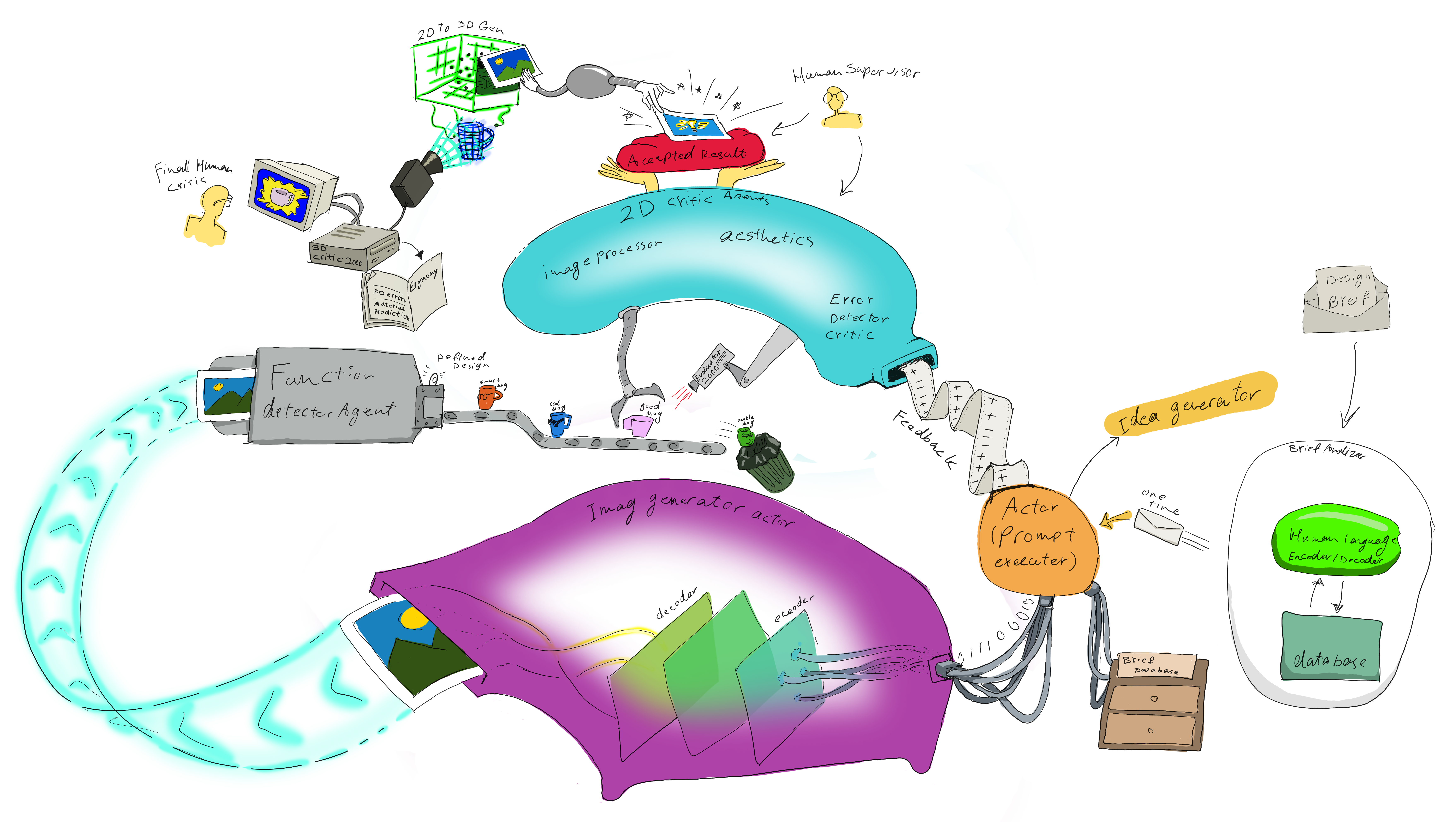
AI Architecture
The architecture of this AI system comprises several agents, each assigned a specific function to improve the design process by automating particular tasks and providing feedback to the human designer. The agents in the system include a language model agent, an idea generator agent, an image generator agent, an image processing agent, and a critic agent.
This is the first agent in the process, responsible for analyzing a given design brief and decoding the information for use by the second agent. It employs natural language processing techniques to extract pertinent information from the brief, such as design goals, constraints, and preferences.
The second agent in the system, it uses the decoded brief to generate ideas in the form of seed codes. This agent employs a deep learning algorithm to create new and unique design ideas based on the input from the language model agent.
This agent uses the seed codes generated by the idea generator agent to produce images in line with the ideas created by the idea generator agent. It employs generative models, such as Generative Adversarial Networks (GANs), to produce images that align with the ideas from the idea generator agent.
This agent analyzes the generated images aesthetically and compares them with the brief, identifying common errors. It then rewards the idea generator agent based on the relevancy of the results, enabling the idea generator agent to refine its results and produce more relevant designs over time.
Workflow
The workflow of the AI architecture involves several cycles and feedback loops with a human supervisor. After each cycle of image generation and processing, the results are presented to a human supervisor. The human agent then uses the results to either provide feedback to the evaluator agent to improve its results and generate more design images or approve the result to proceed to the 3D generation phase.
In the 3D generation phase, a new agent generates point clouds from the approved images, and a Critic agent analyzes the cloud points based on ergonomic and manufacturability standards. The final result is then presented to the human agent for further feedback or for further processing.
The Future of Design: A New Approach
AI and Design:
The advancement of artificial intelligence (AI) has the potential to revolutionize the design industry, bringing both positive and negative implications. While AI can augment the design process, enhance human creativity, and democratize design, it also raises ethical concerns and challenges that need addressing.
Three potential scenarios outline the future of AI in design:
- AI will augment the design process, enabling junior designers to communicate more effectively and improve their skills, but may lead to market imbalances and decreased project payments.
- AI will assist designers in various aspects of the design process while human designers remain crucial in the creative process.
- AI will democratize design, enabling non-designers to create professional-level designs, potentially disrupting the traditional design industry.
Although these scenarios are speculative, they offer valuable insights and a framework for designers to plan for the future. To stay relevant, designers must adapt by broadening their knowledge, being aware of ethical implications, and competing with non-designers enabled by AI. Actively seeking opportunities to learn and improve their skills in AI will position designers for success in the evolving design field.
Beyond Speculation:
This thesis provides insights into AI’s current and future impact on the design industry, highlighting the need for designers to become proficient in instructing and giving feedback to AI systems. It also underscores the importance of addressing ownership and authorship issues concerning work produced by AI algorithms.
Further research should focus on evaluating and revising AI models to meet the specific demands of different design fields, prioritizing collaboration between humans and machines, and automating specific tasks within the design process to improve efficiency and quality. This research serves as a valuable resource for stakeholders in both the design and AI industries and sets the stage for further studies exploring the potential benefits of AI in the design industry.
Acknowledgments
I must begin by expressing my profound gratitude to my father, whose steadfast support throughout this journey has been indispensable. His encouragement was a cornerstone that enabled me to achieve this academic milestone. Equally, I am deeply thankful to my dear friend Mehrbod, who stood by my side, particularly during the final stages of this thesis, and played a crucial role in helping me cross the finish line.
My advisors, Karsten and Mito, deserve special acknowledgment for their exceptional guidance and support throughout the research process. Their expertise and insightful feedback were instrumental in navigating the complexities of this project.I am also indebted to my friend Shayan, who not only provided valuable insights but also meticulously reviewed my results with patience and care. His contributions were crucial in shaping my research. I would also like to express my appreciation to Ben O’heir for sharing his invaluable experiences, and to Alberto for his guidance in clarifying my aims and goals throughout the research.